Abstract
1. The effect of acetylcholine and carbamylcholine on the axon and Schwann cell membrane potential have been studied in the giant nerve fibre of the squid. The addition of carbamylcholine (10-6 M) to the external sea-water medium has no appreciable effects on the resting and action potentials of the axon. However, it induces a long-lasting hyperpolarization in the surrounding Schwann cells of the unstimulated intact or slit nerve fibres which is completely blocked by D-tubocurarine (10-9 M). Eserine (10-9 M) prolongs the Schwann cell hyperpolarizations induced by a 1 min exposure of the unstimulated nerve fibres to acetylcholine (10-7 M).
2. The addition of carbamylcholine (10-6 M) to the external medium increases the relative permeability of the Schwann cell membrane to the potassium ion in slit nerve fibres. Yet, a hundredfold reduction in external sodium concentration has no appreciable effect on the hyperpolarization of the Schwann cells of the slit nerve fibre under similar conditions.
3. Tetrodotoxin at a concentration of 5 × 10-8 M has no appreciable effects on either the Schwann cell electrical potential or on the hyperpolarizing action of carbamylcholine on the Schwann cells of the unstimulated intact nerve fibres.
4. These findings indicate the presence of acetylcholine receptors in the plasma membrane of the Schwann cell in these nerve fibres and give further support to the hypothesis on the role of the cholinergic system in the genesis of the long-lasting Schwann cell hyperpolarizations caused by the conduction of nerve impulse trains by the axon.
Full text
PDF
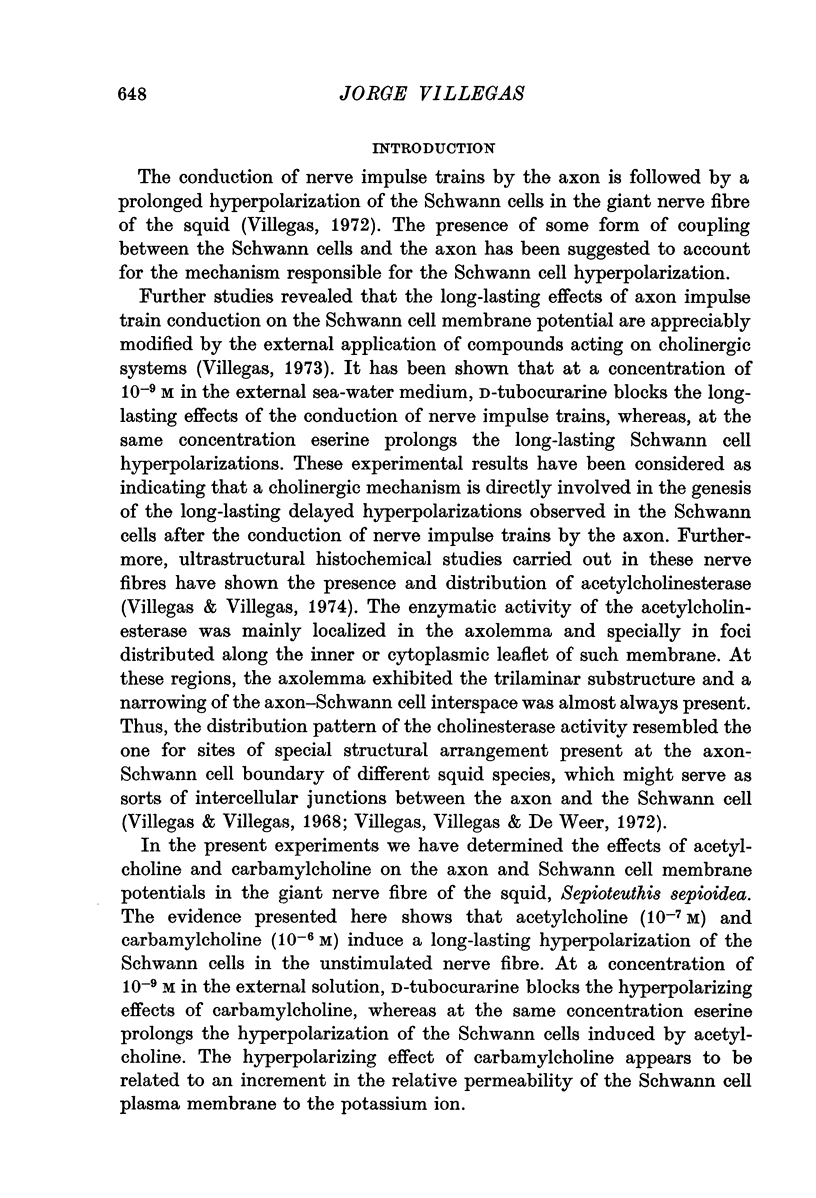

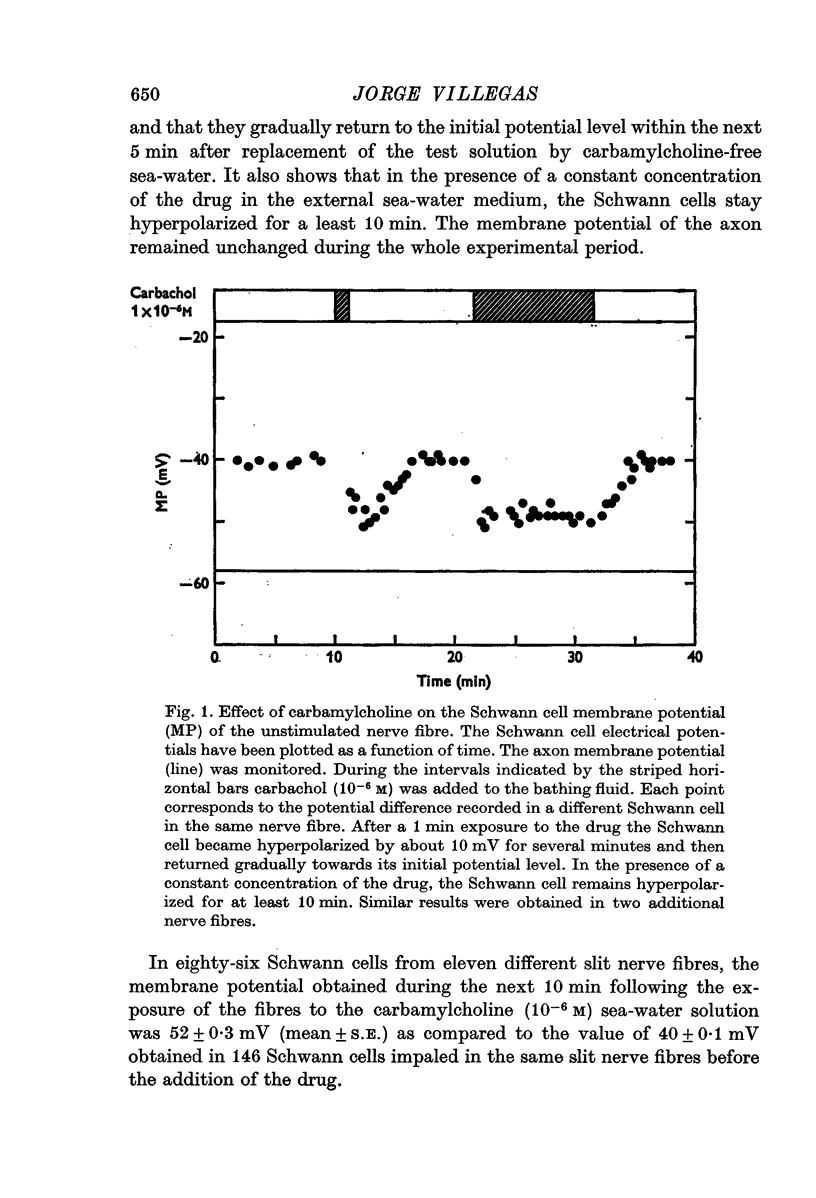
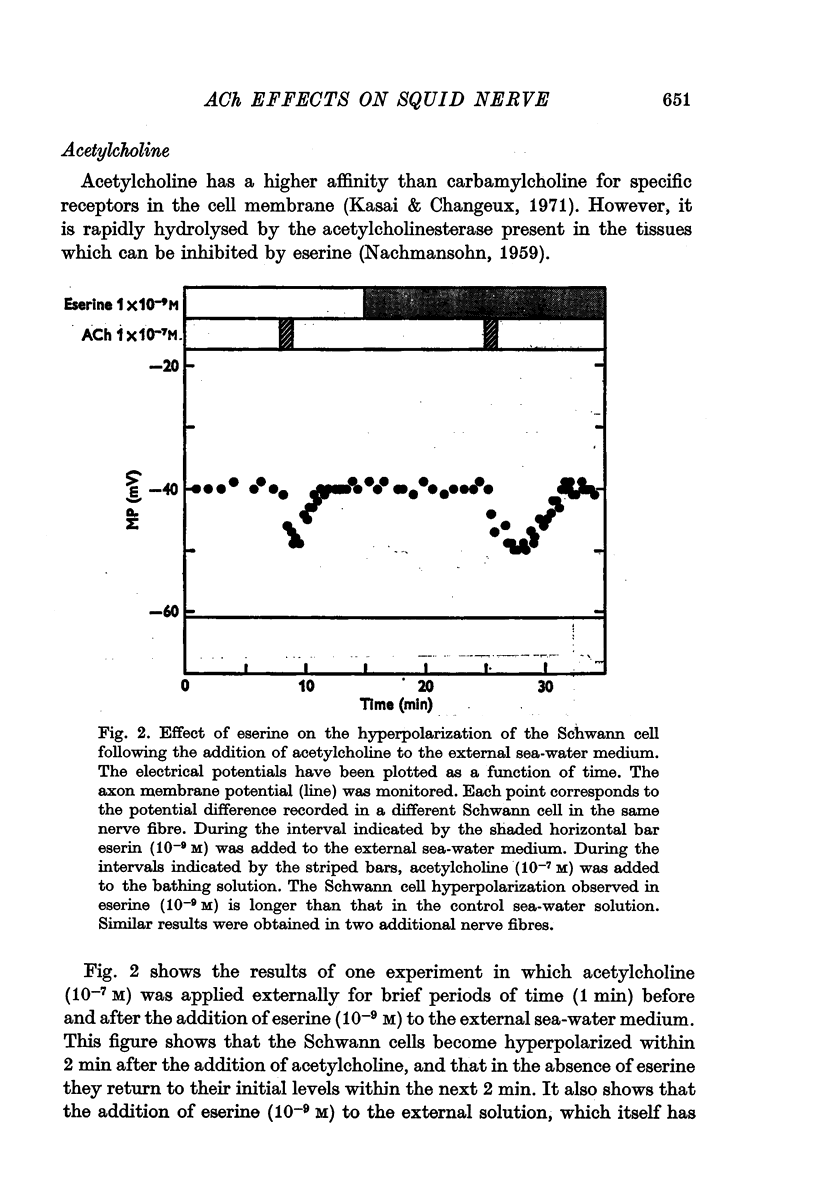
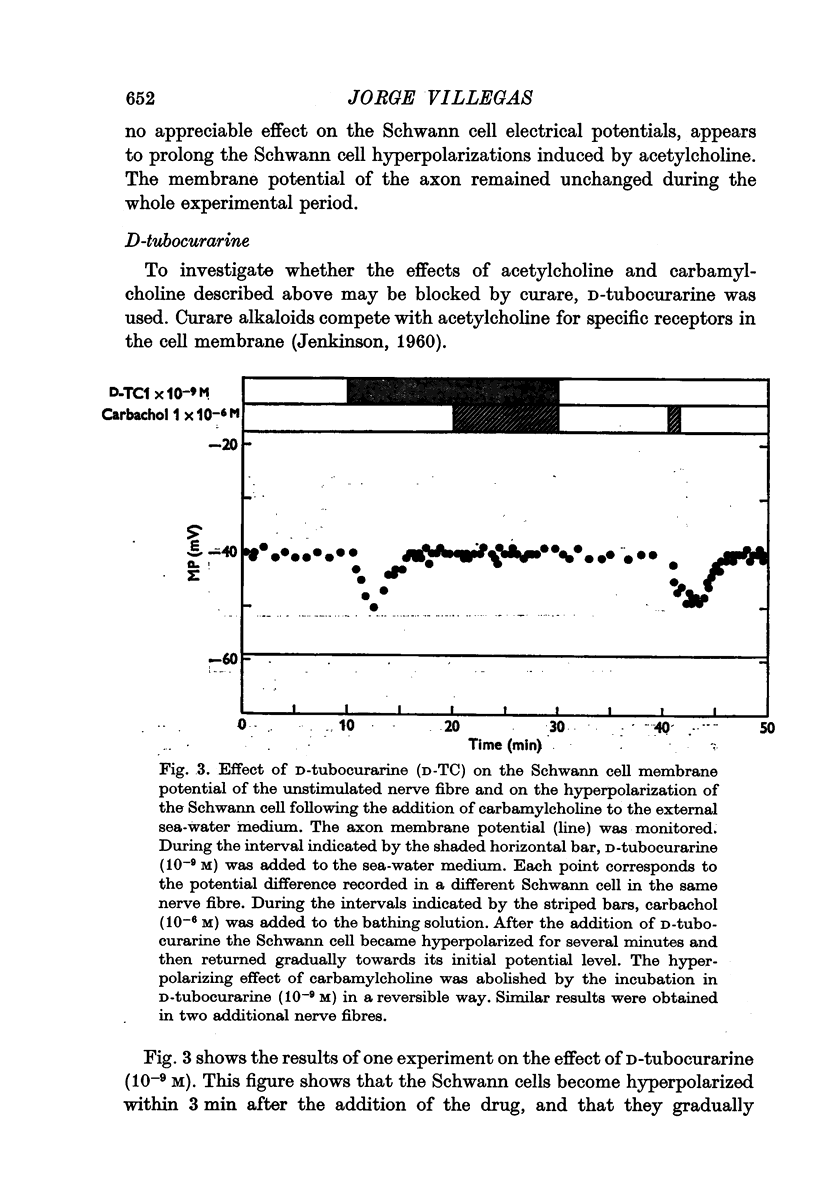




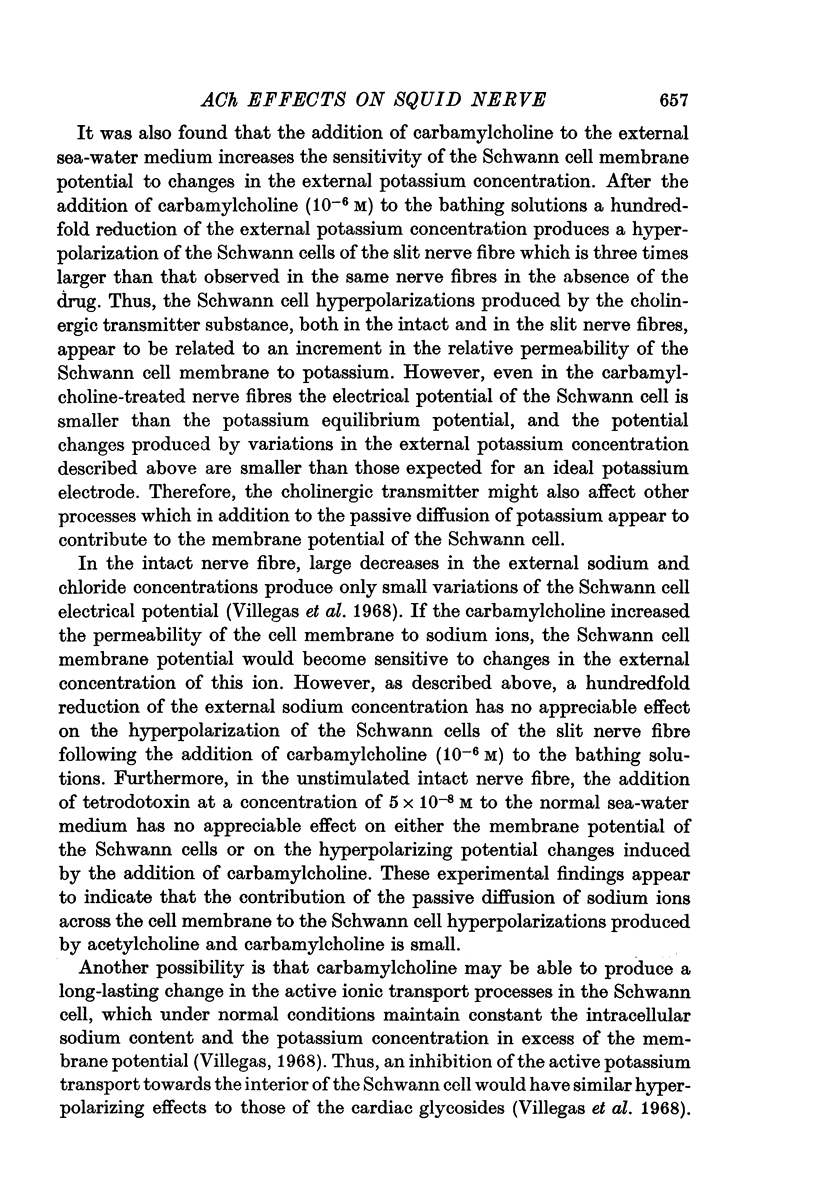
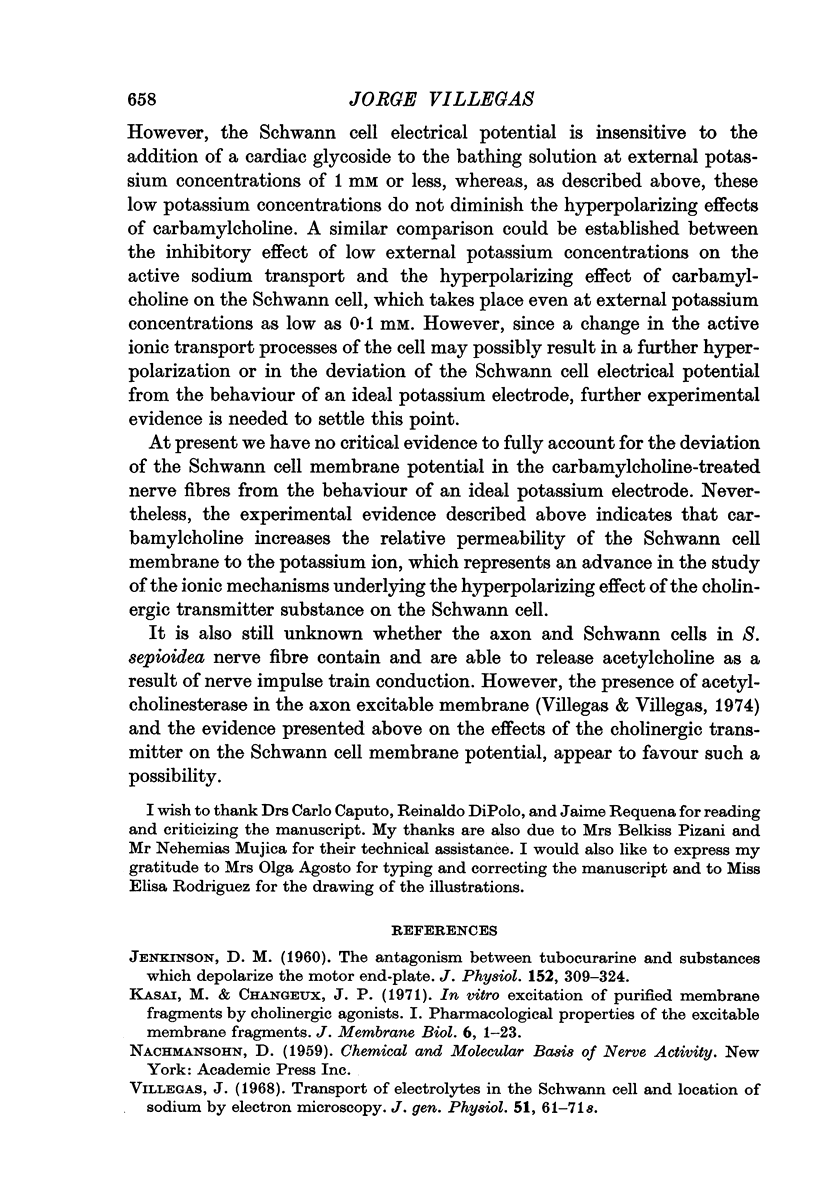
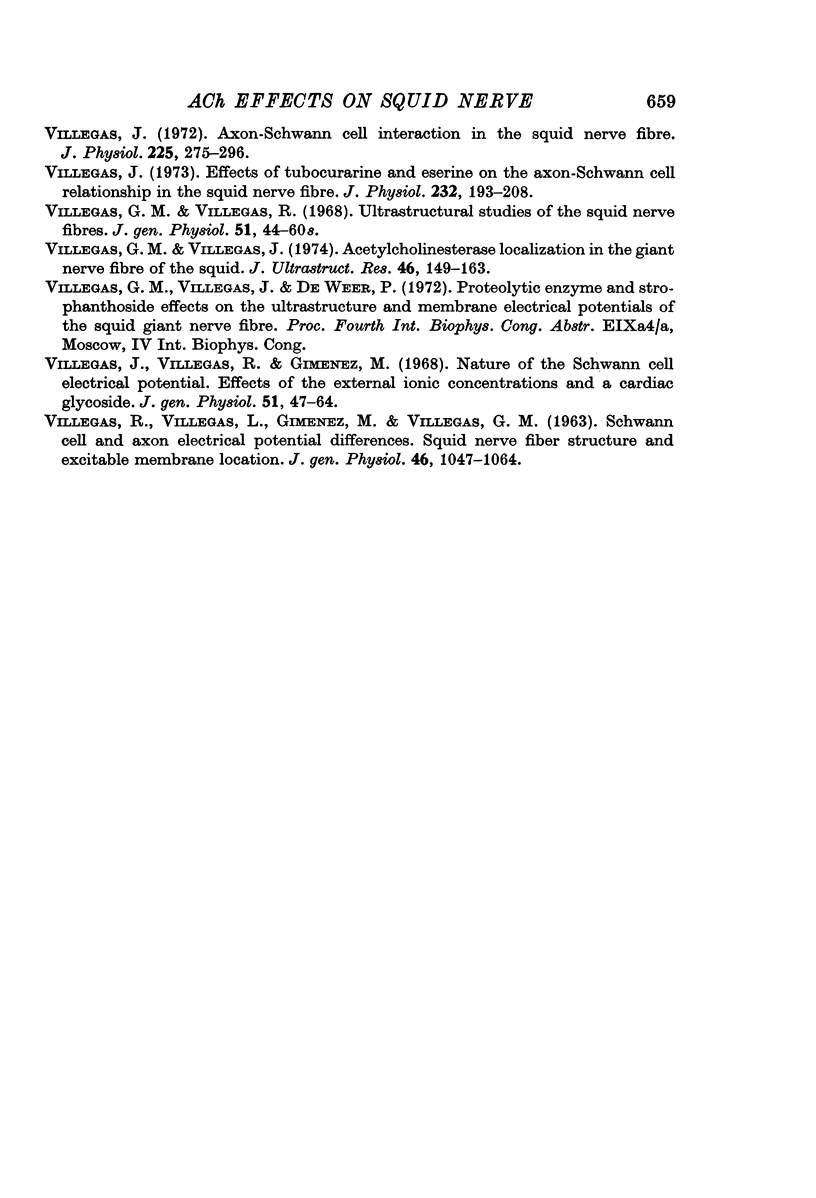
Selected References
These references are in PubMed. This may not be the complete list of references from this article.
- JENKINSON D. H. The antagonism between tubocurarine and substances which depolarize the motor end-plate. J Physiol. 1960 Jul;152:309–324. doi: 10.1113/jphysiol.1960.sp006489. [DOI] [PMC free article] [PubMed] [Google Scholar]
- VILLEGAS R., VILLEGAS L., GIMENEZ M., VILLEGAS G. M. Schwann cell and axon electrical potential differences. Squid nerve structure and excitable membrane location. J Gen Physiol. 1963 May;46:1047–1064. doi: 10.1085/jgp.46.5.1047. [DOI] [PMC free article] [PubMed] [Google Scholar]
- Villegas G. M., Villegas J. Acetylcholinesterase localization in the giant nerve fiber of the squid. J Ultrastruct Res. 1974 Jan;46(1):149–163. doi: 10.1016/s0022-5320(74)80028-6. [DOI] [PubMed] [Google Scholar]
- Villegas J. Axon-Schwann cell interaction in the squid nerve fibre. J Physiol. 1972 Sep;225(2):275–296. doi: 10.1113/jphysiol.1972.sp009940. [DOI] [PMC free article] [PubMed] [Google Scholar]
- Villegas J. Effects of tubocurarine and eserine on the axon-Schwann cell relationship in the squid nerve fibre. J Physiol. 1973 Jul;232(1):193–208. doi: 10.1113/jphysiol.1973.sp010264. [DOI] [PMC free article] [PubMed] [Google Scholar]
- Villegas J., Villegas R., Giménez M. Nature of the Schwann cell electrical potential. Effects of the external ionic concentrations and a cardiac glycoside. J Gen Physiol. 1968 Jan;51(1):47–64. doi: 10.1085/jgp.51.1.47. [DOI] [PMC free article] [PubMed] [Google Scholar]


